- Home
- James Luceno
Tarkin Page 5
Tarkin Read online
Page 5
But regardless of whether they had won or lost the day, Wilhuff would be treated to tales of his ancestors’ exploits: the lore of the early Tarkins.
“All of Eriadu was similar to the Carrion before humans arrived from the Core to tame it,” Jova told him. “Every day, on their own, as pioneers and settlers, they waged battles with the beasts that ruled the planet. But our ancestors’ eventual triumph only altered the balance, not the reality. For all that sentients have achieved with weapons and machines, life remains an ongoing battle for survival, with the strong or the smart at the top of the heap, and the rest kept in check by firepower and laws.”
Jova explained that the Tarkin family had produced a succession of mentors and guides through the many generations. What made him unique was his decision to make the Carrion his home following his initiation in young adulthood. That was how he came to have tutored Wilhuff’s father, and why he might even live long enough to tutor Wilhuff’s son, should he have one.
They spent the remainder of the dry season on the plateau, leaving only when the rains came to that part of Eriadu. Wilhuff was a different person when the speeder carried them down from the mesa and back into civilization. Jova had no need to lecture him on what technology had allowed his ancestors to achieve in the planet’s handful of cities, since it was evident everywhere Wilhuff looked.
But Jova had something to add.
“Triumphing over nature means better lives for sentients, but dominance is sustained only by bringing order to chaos and establishing law where none exists. On Eriadu, the goal was always to rid the planet of any creature that hadn’t grown to fear us, so that we could rule supreme. Up the well, outside Eriadu’s envelope, the goal is the same, but with a different caliber of predators. When you’re old enough to be taken there, you’re going to find yourself faced with prey who are every bit as quick thinking, well armed, and determined to succeed as you are. And unless you’ve taken the lessons of the Carrion to heart, only the stars themselves will bear witness to your cold airless death, and they will remain unmoved.”
Returned to his comfortable bedroom, Wilhuff wrestled with what he had been put through, the experiences on the plateau infiltrating his sleep as vivid dreams and night terrors. But only for a short time. Little by little, the experiences began to shape him, and would become the stuff of his true education. Each of the next five summers would find him on the Carrion, and each season his education would widen, right up until the day he had to endure his final test at the Spike.
But that was a different story altogether.
TARKIN WAITED UNTIL the Carrion Spike was in hyperspace to announce an impromptu inspection of the officers and enlisted ratings who were accompanying him to Coruscant. In the starship’s austere main cabin, furnished only with a round conference table and chairs for half a dozen, eighteen of his crew were standing smartly in two rows, arms at their sides, shoulders squared, chins held high. Each wore a uniform similar to his, though the tunics were slightly longer and the trousers slimmer and more threadbare than those the fabricator had produced for him. The officers wore brimmed caps studded with identity disks, and displayed code cylinders in their appropriate pockets.
Hands clasped behind his back and looking stylish in his new garments, Tarkin had reached the last crewmember in the second row—a midshipman—when he stopped to peer down at the instep of the junior officer’s left boot, where a smudge of what looked like grease or some other viscous substance had left a large circular stain.
“Ensign, what is that?” he asked, pointing.
The young man lowered bloodshot eyes to follow Tarkin’s forefinger to the spot. “That, sir? Must have spilled some hair product I was applying in preparation for the inspection.” His gaze was unsteady when he looked up at Tarkin. “Permission to wipe it off, sir?”
“Denied,” Tarkin said. “To begin with, it’s obviously a stain, Ensign, not some blemish you can simply rub out.” He paused to scan the midshipman from head to toe. “Remove your cap.” The youth’s brown hair was regulation length, but it did indeed have the stiff look that hair gel might have imparted.
“Attempting to train it, are you?”
The midshipmen stood stiffly, eyes front. “Exactly, sir. It can be unruly.”
“No doubt. But that blot on your boot is not hair product.”
“Sir?”
“One can tell simply by the way it congealed that it is lubricant—lubricant of a type used almost exclusively in the repulsor generator of our T-Forty-Four landspeeders.” Tarkin’s eyes narrowed as he focused on the stain. “I see, too, that the lubricant is impregnated with grit, which I suspect came from outside Sentinel’s auxiliary dome, almost certainly from where the landing platform is undergoing renovation.”
The youth swallowed. “I don’t know what to say, sir, I could have sworn—”
“One of our landspeeders was recently sent to the repair bay of the vehicle pool after having become fouled by construction dust,” Tarkin said, as if to himself. “There are areas in the bay that are not entirely accessible to our security holocams. However, I often tour the vehicle pool to review repairs, and recently have chanced upon envelopes of a sort that have become fashionable for the storage of a particular class of stimulant spice.” His gaze bored into the youth’s face. “You’re sweating, Ensign. Are you certain you’re fit for duty?”
“A touch of hyperspace nausea, sir.”
“Perhaps. But nausea doesn’t account for the fact that the thumb and index finger of your right hand bear yellow-ocher stains, which are often the result of pinching plugs of spice that hasn’t been sufficiently processed. I observe, too, that your left eyetooth reveals what appears to be a nascent cavity, such as might be caused by dipping spice. Finally, your record indicates that you have recently been late in reporting for duty, as well as inattentive when you deign to report.” Tarkin paused for a moment. “Have I forgotten anything?”
Embarrassment mottled the midshipman’s face.
“Nothing to say for yourself, Ensign?”
“Nothing at this time, sir.”
“I thought not.”
Tarkin swung to a female officer standing at the opposite end of the row. “Chief, Ensign Baz is relieved of duty. See to it that he is escorted to the crew berth and confined to quarters for the remainder of the voyage. I will decide his fate once we reach Coruscant.”
The petty officer saluted. “Yes, sir.”
“Also, alert Commander Cassel that the vehicle pool has become a rendezvous area for spice users. Tell him to perform a flash inspection of all barracks and personal lockers. I expect him to confiscate all inebriants and other illicit substances.”
“Sir,” she said.
Dismissed, the rest of the crew scattered with haste, and Tarkin blew out his breath in irritation. The conversation with Mas Amedda had left him on edge, and he was taking his frustration out on his crew. He understood and fully supported the idea of a chain of command, but he took it personally when power plays interfered with his duties. He trusted Cassel to attend to Sentinel’s responsibilities in his absence, but he wasn’t comfortable with being summoned away at such a critical time, much less without full explanation. If the purpose of the visit was to discuss the recent attack, then perhaps he should have delayed filing the report. If not about the attack, what matter could be so vital that it couldn’t wait until after the looming shipments were safely escorted to Geonosis?
What was done was done, however, and he was determined to present the best possible face to the Emperor.
Leaving the main compartment, he walked forward through two hatches to the ship’s command cabin, which he had designed to be more spacious than those found on similar ships, as it was here that he spent most of his travel time. Immediately he found himself relaxing, and let out his breath in slow reprieve. If exasperated by Coruscant’s demands, he should at least be able to find some solace in the ship.
At just under 150 meters in length, the corvette
fit neatly between the old Judicial cruisers and Corellian Engineering’s new-generation frigates. Heavily armed with turbolasers, ion cannons, and proton torpedo tubes, and featuring a Class One hyperdrive that made it the fastest ship in the Imperial Navy, the Carrion Spike had been designed specifically for him—and to meet many of his personal specifications—by Sienar Fleet Systems. Based on a prototype stealth corvette that had been introduced during the Clone Wars at the Battle of Christophsis to counter Separatist Admiral Trench’s blockade of the planet, the triangular-shaped ship was unique in having cloak technology. Powered by rare stygium crystals, the stealth system rendered the ship essentially invisible to ordinary scanners.
Hearing Tarkin enter, the captain—a slim, dark-complected man who had served under Tarkin during the war—swiveled in his acceleration chair.
“Sir, do you wish to assume the controls?”
Tarkin nodded and replaced him in the command chair, running his hands over the instruments as he settled in. The Carrion Spike’s ion turbine sublight arrays, countermeasures suite, and navicomputer were also state-of-the-art, the latter allowing the ship to make the jump from Sentinel Base to Coruscant without exiting hyperspace to retrieve routing data from relay stations or primitive hyperwave beacons.
Gazing into the nebulous swirl of hyperspace, he decided that, yes, he could take comfort in having such a ship. In many respects the Carrion Spike was a sign of just how far he had come, and where he now stood in the Imperial hegemony.
And what Eriadu wouldn’t have given for such a vessel in the decades leading up to the Clone Wars! At that point the sector’s problems were pirates lured by sudden wealth, privateers hired by Eriadu’s competitors in the lommite trade, and resistance factions protesting the unjust practices of shipping conglomerates operating with impunity in the free trade zones. Eriadu would eventually triumph with the defenses it had at its disposal; but a ship like the Carrion Spike might have granted the Seswenna the edge it needed to vanquish its enemies with greater efficiency and added flourish.
In the absence of a Republic military, and as punishment for refusing to provide the Core Worlds with profitable deals, Judicials—the Republic’s non-Jedi law enforcers—were often withheld from intervening in disputes, leaving the Seswenna little choice but to create its own armed forces. A loosely knit group that came to be known as the Outland Regions Security Force, the sector’s response to pirates and privateers had to make do with second-rate ships built on Eriadu or at Sluis Van, and with laser and ion cannons purchased from arms merchants who for a century had been ignoring the Republic’s ban on the sale of weaponry to member worlds.
Not six standard months after passing his ultimate test on the Carrion Plateau, sixteen-year-old Wilhuff was sent up the well to begin his training in space combat, his tutelage supervised by an entirely new cast of characters, some of them Tarkins, but others from worlds as distant as Bothawui and Ryloth. Jova had neither a taste nor the tolerance for space, but would sometimes sedate himself with anti-nausea drugs and accompany his grand-nephew, less to offer hands-on instruction in astrogation, combat maneuvering, and weapons training than to make sure that Wilhuff was applying in zero-g the lessons he had learned on the plateau.
“More than fifty Tarkins have lost their lives to marauders,” his uncle told him, “and the number of Eriaduans who’ve been killed is beyond estimation.”
To drive home the point, their first stop was a colony world of Eriadu that had a suffered a recent attack by pirates. Wilhuff had had ample time to grow accustomed to the sight, scent, and taste of blood, but he had never seen so much human blood spilled in one place. The mining colony had been attacked without warning, thoroughly plundered, and burned to the ground. Those settlers who hadn’t died of laser wounds or been incinerated in the fires had been mercilessly butchered and left to be picked over by scavengers or consumed by insects. It was clear to Wilhuff that many of them had been tortured. Hundreds of settlers had been abducted and perhaps already sold into slavery.
Wilhuff was sickened, physically and spiritually, in a way he had never experienced on the Carrion, and the disgust he felt gave rise to despair and a hunger for revenge.
“This is the way of things among the lawless,” Jova said as they moved grimly through the destruction, not so much to defuse Wilhuff’s outrage as to anchor the massacre in a moral context. “Pirates, privateers, or activists, they’re no different from the vermin and predators we dealt with on the Carrion. They need to be educated, and acquainted with our notion of law and order. So you treat them just like the ones we hunted or forced into submission, striking fast and in full commitment. You make use of asteroid fields, nebulae, star flares, whatever you find, to intensify the havoc. You keep them off balance with unexpected maneuvers, and you let your starfighters function like vibro-lances in the hands of our Rodians. You establish supremacy like we showed you, by concentrating all the force at your command on one point, hammering away like you would with a vibroblade, through armor like you would through scales or cartilage or bone, and you show no quarter. You stay on your quarry until you’ve found the soft spot that brings death, and you put the fear into the rest by gutting your victim, ripping out his liver, and devouring it.”
As he was expected to, Wilhuff took his uncle’s instructions to heart, by demonstrating in space the mettle he had shown on the Carrion.
The incident that would garner the most attention in the academies he would later attend was one involving Eriadu’s ore convoys and a Senex sector pirate group known as Q’anah’s Marauders. Loans from off world financiers had enabled the Greater Seswenna to create the Outland Regions Security Force, but the militia had far too few vessels to protect every lommite shipment traveling between Eriadu and the Core. Making the most of the shortage, several pirate groups had forged an alliance wherein some would monitor or engage Outland’s warships while others preyed on the unguarded convoys.
The titular head of the alliance was a human female known only as Q’anah, whose audacious raids throughout the Senex sector had made her something of a folk hero. A native of the Core world Brentaal IV, she was the only daughter of a former bodyguard for House Cormond, who had accepted a lucrative offer to leave the Core to oversee security for House Elegin on the world Asmeru. Trained in combat by her father and eager for adventure, Q’anah became the mistress of the youngest son of the noble house, who was himself leading a secret life as a pirate and whose group Q’anah eventually joined. Fighting alongside the members of her lover’s crew, Q’anah lived a colorful and bawdy life until the young Elegin was captured, sentenced to death, and executed on Karfeddion. Having by then given birth to Elegin triplets, Q’anah dedicated herself to avenging the death of her paramour by targeting ships and settlements strewn across the Senex-Juvex sectors.
At the point she became a nuisance to Eriadu, she had already become the subject of breathtaking HoloNet tales and scandalous rumors, having survived starship collisions and starfighter crashes, blaster-bolt and vibroblade wounds, and countless fistfights and personal duels. Said to be as fast on the draw as a circus sharpshooter and as talented on the dance floor as a double-jointed Twi’lek, Q’anah had chewed off her own infected hand while awaiting rescue on an isolated moon, and was known to wear artificial arms and at least one leg—from the knee down—in addition to an ocular implant and who knew what else. Twice she had been captured and sentenced to lengthy terms in maximum-security prisons, and had escaped from each thanks to daring rescues mounted by her soldiers, who all but worshipped her. Only her link to House Elegin had saved her from execution. But following an encounter with Judicial Forces, during which she destroyed six ships, the Republic also put a high price on her head, and it was that bounty that had landed her in the Greater Seswenna, a sector rarely if ever patrolled by Judicials, notwithstanding repeated entreaties by Eriadu and other harassed worlds.
Lommite convoys typically comprised up to a score of unpiloted container ships slave-rigged to a crewed
shepherd vessel, now and then with an armed gunboat trailing. Each container was capable of jumping to hyperspace, but during those years before the era of affordable and reliable navicomputers, the convoys had to navigate by hyperspace buoys located along the route, and experience had proved that jumping in single file was safer than going to hyperspace in clusters, even though the maneuver left the containers vulnerable to attack on their reversions to realspace.
Outland capital ships would ride herd on valuable shipments, but ordinary convoys frequently found themselves targeted by Q’anah’s flotilla of deadly frigates and corvettes. With the swiftest ships engaging the shepherd vessel, the rest would deliver boarding parties to some of the containers and separate them from the pack. Once the slave-rigs of the ore carriers were disabled, the boxy vessels would be slaved to a dedicated pirate frigate and jumped in line to hyperspace. By the time Outland could respond to the distress calls, Q’anah’s crews were already selling the stolen ore on the black market or turning it over to the companies that had hired them to carry out the raids.
The convoys became easier and easier pickings, and Eriadu Mining began to accept that it was more cost-effective to surrender the containers than to risk having their overpriced lead or follow ships destroyed in defensive engagements. The company attempted to trick the pirates by placing empty container ships among the fully loaded ones, but the dummy ships only prompted an increase in the number of raids. The company also tried concealing explosive devices and even, on a few occasions, parties of armed spacers in some of the containers. Not once, however, did Q’anah’s raiders take the bait, and over time the strategy of including dummy containers and armed troopers was also deemed too expensive. Attempts were made to predict which containers the pirates would target, but in the end Eriadu Mining’s battle analysts decided that Q’anah was choosing containers at random.

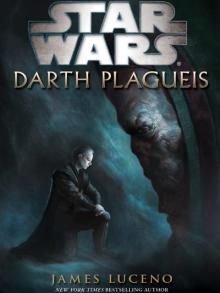 Darth Plagueis
Darth Plagueis Memories End
Memories End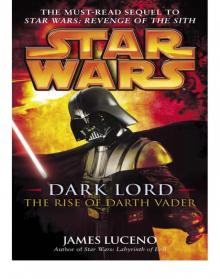 Star Wars: Dark Lord: The Rise of Darth Vader
Star Wars: Dark Lord: The Rise of Darth Vader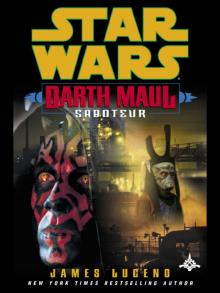 Star Wars Darth Maul: Saboteur
Star Wars Darth Maul: Saboteur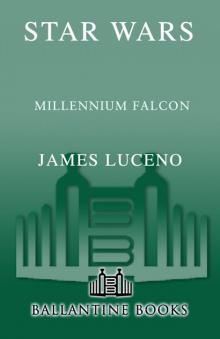 Star Wars: Millennium Falcon
Star Wars: Millennium Falcon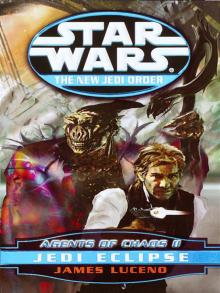 Jedi Eclipse
Jedi Eclipse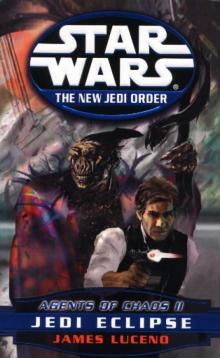 Star Wars The New Jedi Order - Agents of Chaos II - Jedi Eclipse - Book 5
Star Wars The New Jedi Order - Agents of Chaos II - Jedi Eclipse - Book 5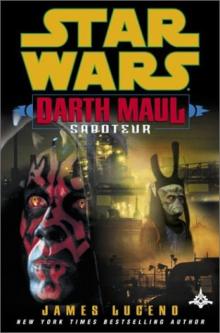 Star Wars - Darth Maul - Saboteur
Star Wars - Darth Maul - Saboteur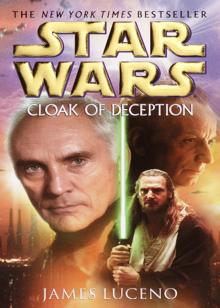 Star Wars: Cloak of Deception
Star Wars: Cloak of Deception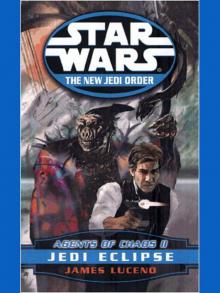 Star Wars: New Jedi Order: Agents of Chaos II: Jedi Eclipse
Star Wars: New Jedi Order: Agents of Chaos II: Jedi Eclipse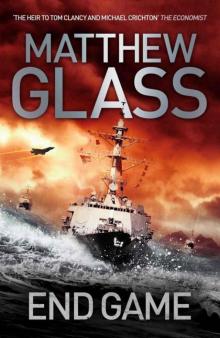 End Game
End Game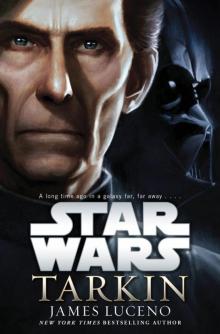 Tarkin: Star Wars
Tarkin: Star Wars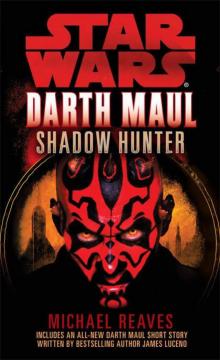 Restraint
Restraint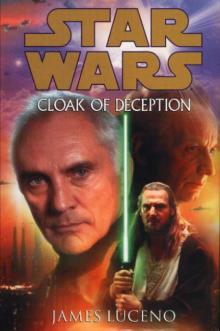 Star Wars - Cloak Of Deception
Star Wars - Cloak Of Deception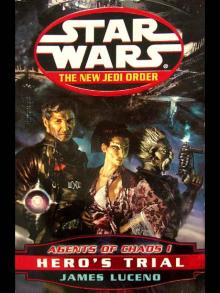 Star Wars: New Jedi Order: Agents of Chaos I: Hero's Trial
Star Wars: New Jedi Order: Agents of Chaos I: Hero's Trial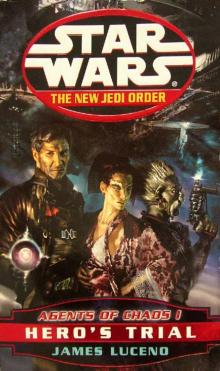 Star Wars The New Jedi Order - Hero's Trial - Book 4
Star Wars The New Jedi Order - Hero's Trial - Book 4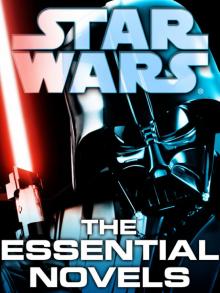 The Essential Novels
The Essential Novels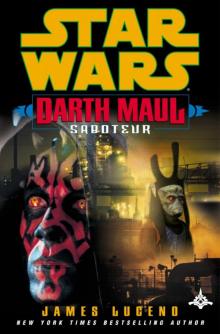 Darth Maul: Saboteur
Darth Maul: Saboteur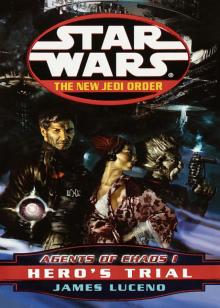 Hero's Trial: Agents of Chaos I
Hero's Trial: Agents of Chaos I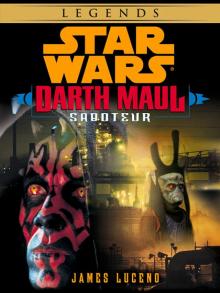 Saboteur
Saboteur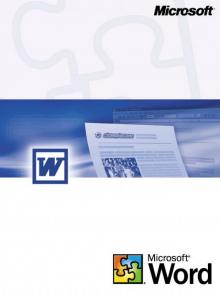 The Unifying Force
The Unifying Force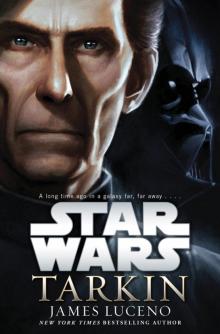 Tarkin
Tarkin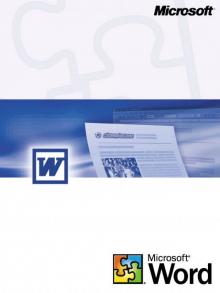 Dark Lord : The Rise of Darth Vader
Dark Lord : The Rise of Darth Vader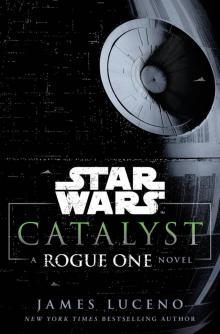 Catalyst
Catalyst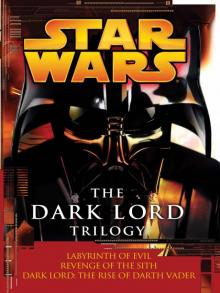 Book 0 - The Dark Lord Trilogy
Book 0 - The Dark Lord Trilogy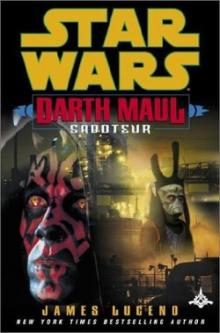 Darth Maul: Saboteur (star wars)
Darth Maul: Saboteur (star wars)